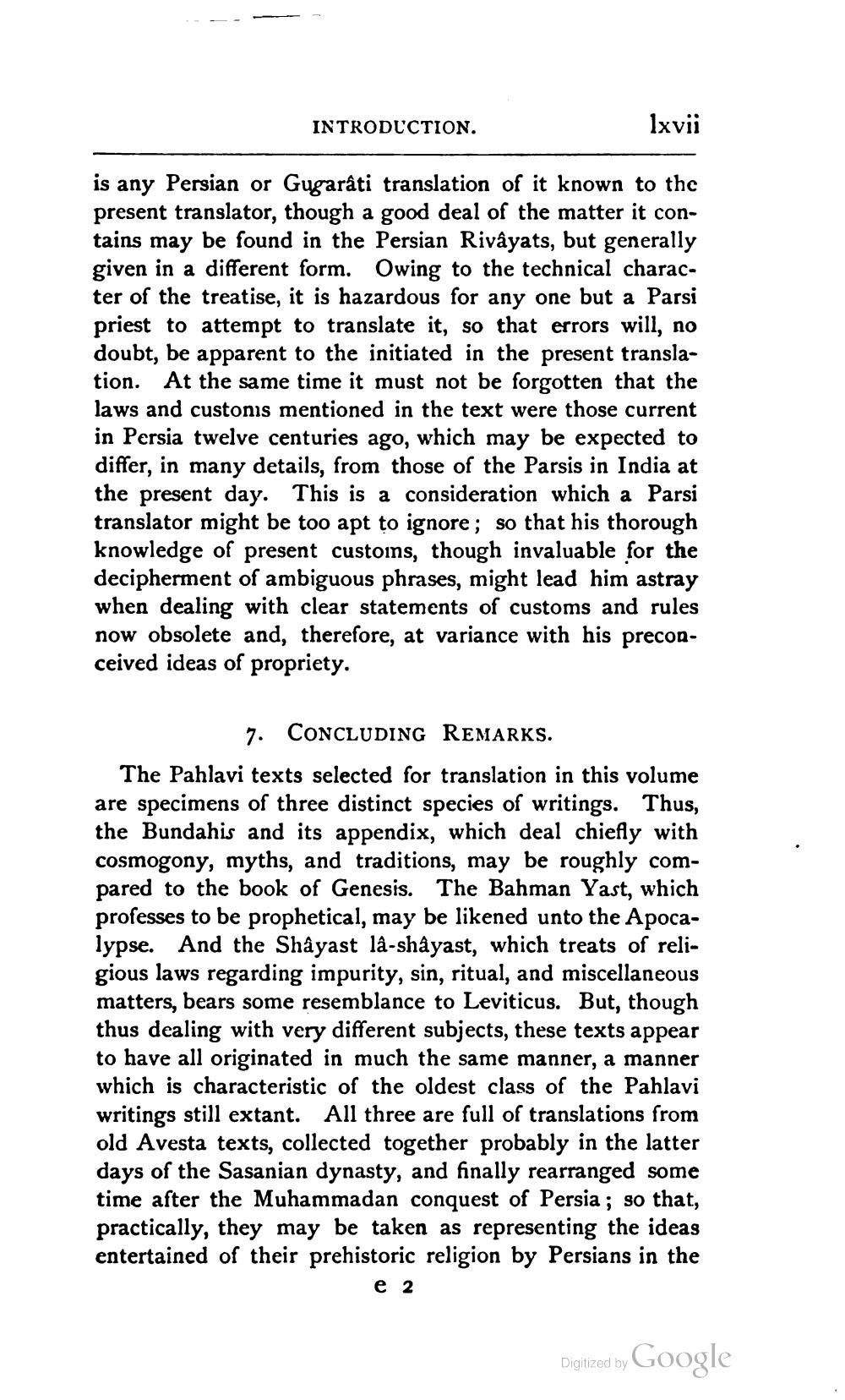________________
INTRODUCTION.
Ixvii
is any Persian or Gugarati translation of it known to the present translator, though a good deal of the matter it contains may be found in the Persian Rivâyats, but generally given in a different form. Owing to the technical character of the treatise, it is hazardous for any one but a Parsi priest to attempt to translate it, so that errors will, no doubt, be apparent to the initiated in the present translation. At the same time it must not be forgotten that the laws and customis mentioned in the text were those current in Persia twelve centuries ago, which may be expected to differ, in many details, from those of the Parsis in India at the present day. This is a consideration which a Parsi translator might be too apt to ignore; so that his thorough knowledge of present custoins, though invaluable for the decipherment of ambiguous phrases, might lead him astray when dealing with clear statements of customs and rules now obsolete and, therefore, at variance with his preconceived ideas of propriety.
7. CONCLUDING REMARKS. The Pahlavi texts selected for translation in this volume are specimens of three distinct species of writings. Thus, the Bundahis and its appendix, which deal chiefly with cosmogony, myths, and traditions, may be roughly compared to the book of Genesis. The Bahman Yast, which professes to be prophetical, may be likened unto the Apocalypse. And the Shayast lå-shầyast, which treats of religious laws regarding impurity, sin, ritual, and miscellaneous matters, bears some resemblance to Leviticus. But, though thus dealing with very different subjects, these texts appear to have all originated in much the same manner, a manner which is characteristic of the oldest class of the Pahlavi writings still extant. All three are full of translations from old Avesta texts, collected together probably in the latter days of the Sasanian dynasty, and finally rearranged some time after the Muhammadan conquest of Persia ; so that, practically, they may be taken as representing the ideas entertained of their prehistoric religion by Persians in the
e 2
Digitized by
Digitized by Google




